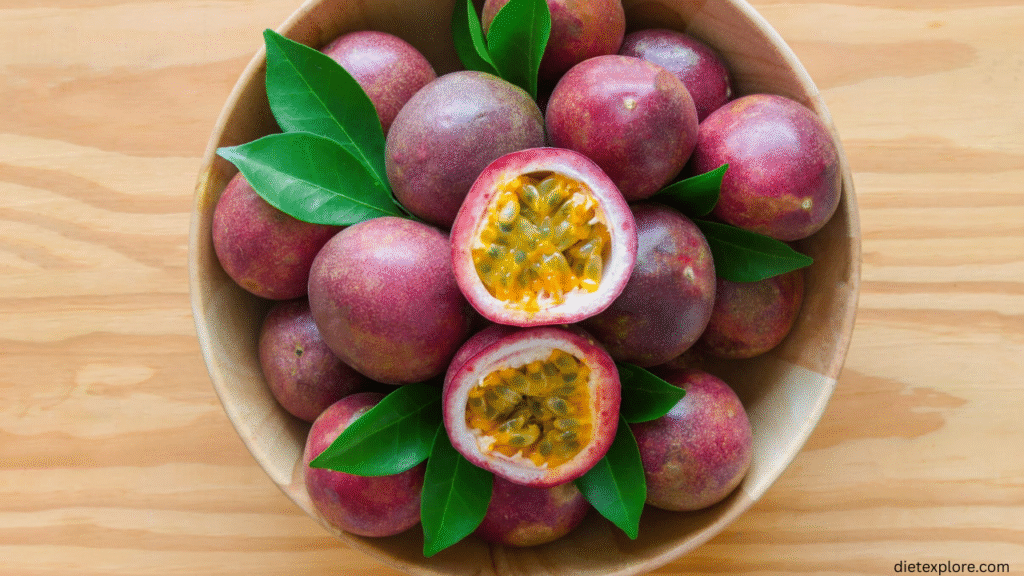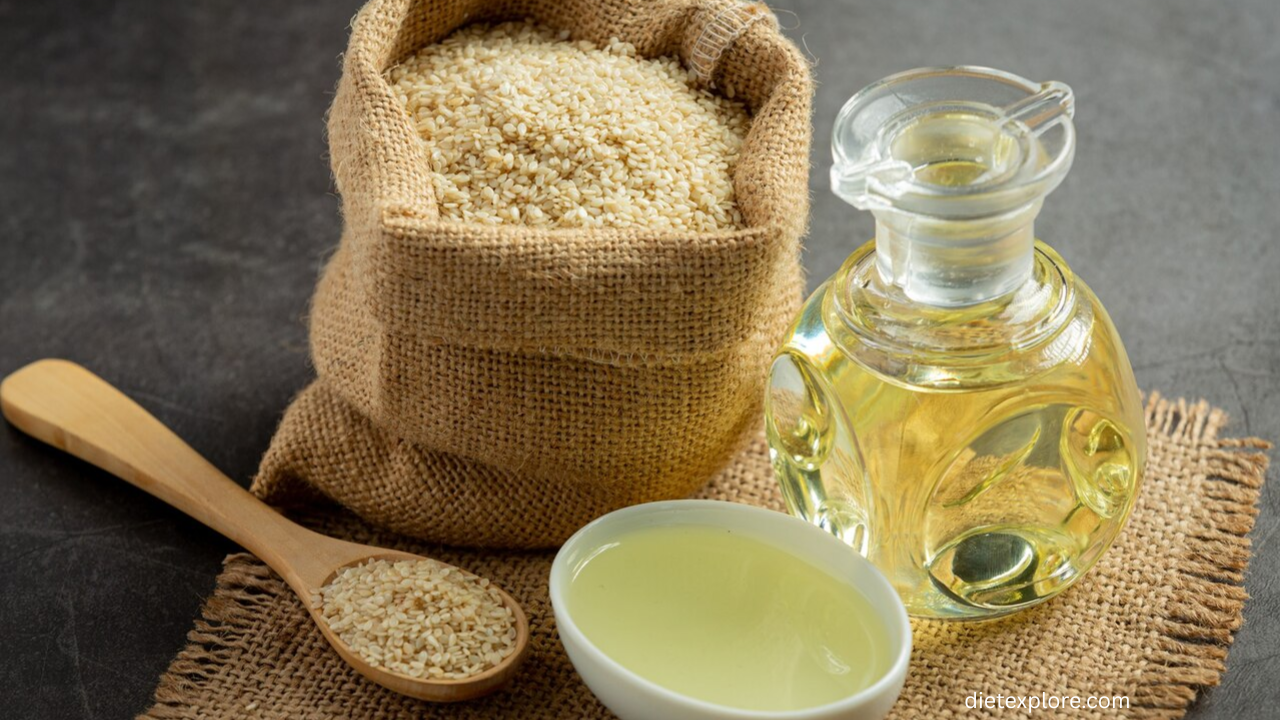Introduction: Passion Fruit
Passion fruit, known scientifically as Passiflora edulis, is a vibrant tropical fruit celebrated for its intense aroma, tangy-sweet flavor, and rich nutritional profile. Native to South America—particularly southern Brazil, Paraguay, and northern Argentina—it has become widely cultivated in tropical and subtropical regions across the globe.
With a smooth or slightly wrinkled rind in shades of deep purple or golden yellow, the fruit conceals a lush, juicy pulp packed with edible seeds. This pulp is revered in culinary applications—from fresh consumption to beverages, desserts, and sauces.
What sets passion fruit apart is not just its exotic flavor but its nutritional density. Low in calories yet rich in antioxidants, fiber, vitamins A and C, potassium, and more, it’s both a flavorful delight and a healthful addition to balanced diets. In this article, we’ll delve deep into various forms and uses of passion fruit—from juice, puree, liqueur, to glamorous cocktails like margaritas and martinis—while exploring its agricultural, sensory, and wellness dimensions.
Passion Fruit
The term “passion fruit” refers to several varieties within the Passiflora genus, with purple (P. edulis f. edulis) and yellow (P. edulis f. flavicarpa) being the most common. The fruit is botanically a pepo, a fleshy berry containing the pulp-seed sacs beloved by many.
Inside the shell lies a gelatinous, aromatic pulp housing numerous seeds—each bite offering a mix of crunch and softness. The flavor is citrusy with subtle musky notes, compared by some to guava in its aromatic quality.
Nutritionally, each small purple passion fruit provides a rich source of vitamins A and C, fiber, iron, and potassium, making it nutrient-dense despite low calorie content. It also contains polyphenols, carotenoids, and antioxidants like beta-carotene, flavonoids, and piceatannol, which offer anti-inflammatory and metabolic benefits.
Whether eaten raw, juiced, or used in cooking, passion fruit is both a flavor powerhouse and a nutrition ally.

Also Read: /peptides-for-weight-loss/
Passion Fruit Juice
Passion fruit juice is a staple in many tropical regions. The pulp and seeds are blended and often strained to yield a richly flavored juice—tart, aromatic, and slightly sweet. It’s commonly mixed with other juices like orange or pineapple to enhance aroma and flavor.
This juice isn’t just delicious—it offers health benefits, delivering vitamins, antioxidants, and dietary fiber (when seeds are included). It’s also low glycemic, helping to avoid sharp blood sugar spikes. Research shows that compounds in passion fruit seeds, particularly piceatannol, may enhance insulin sensitivity in overweight individuals.
A study even found that a single consumption of passion fruit juice could improve work performance, potentially by boosting attentional focus and preventing post-meal drops in energy.
This superfruit juice offers both delightful taste and metabolic perks, whether sipped solo or added to your favorite mocktail.
Passion Fruit Plant
The passion fruit plant, Passiflora edulis, is a fast-growing perennial vine, often using tendrils to climb structures or trees. It thrives in tropical and subtropical climates and begins flowering and fruiting within 18–24 months under optimal conditions.
With its evergreen foliage, the vine remains lush in warm regions but may shed leaves when exposed to colder climates. It can climb 20–30 feet high, making it both a fruit-bearing plant and an ornamental feature.
Cultivation demands include warmth, sunlight, and space to sprawl or climb; patience is also key, as substantial fruiting takes a year or two. Purple and yellow varieties differ not only in fruit color but also in pollination: while purple types may be self-compatible, yellow types often require cross-pollination—sometimes facilitated by bees like carpenter bees.
Symbolically, the plant’s name—derived from early Christian missionaries—was used to symbolize the “Passion of Christ,” making the vine rich in cultural and botanical significance.
Passion Fruit Puree
Passion fruit puree is made by blending the pulp (and often seeds) into a thick, flavorful base perfect for desserts, sauces, and beverages. Puree offers a concentrated burst of the vine fruit aroma and flavor, maintaining both the tartness and the sugary notes.
In culinary use, it’s ideal for creating cheesecakes, ice creams, sorbets, glazes, and toppings like pavlova sauces. The pulp’s natural texture—gelatinous with crunchy seeds—adds luxurious mouthfeel, while its acidity balances rich desserts.
From a nutrition standpoint, puree retains the fruit’s fiber, vitamins, and antioxidants, especially when seeds are included. The polyphenols and piceatannol remain intact, offering anti-inflammatory and metabolic benefits.
Puree also enables versatile uses: incorporated into baked goods, whisked into salad dressings, or merged into cocktails as syrup or base.
Passion Fruit Liqueur
Passion fruit liqueur marries the fruit’s bold flavor with the allure of alcohol, resulting in a tropical-flavored spirit often used in high-end mixology. To create it, its puree or juice is steeped in alcohol (such as vodka or rum), sometimes sweetened with sugar or syrup.
This liqueur captures the fruit’s aroma, tart sweetness, and natural depth—perfect for mixing in cocktails like margaritas, martinis, or tropical punches. Homemade versions allow precise control over flavor intensity and sweetness.
The beauty of this superfruit liqueur lies in how it translates gut-healthy, antioxidant-rich pulp into a luxurious cocktail ingredient, offering both depth and flair without compromising the fruit’s character.
Passion Fruit Syrup
Passion fruit syrup is made by cooking down its juice (or puree), sugar, and water into a thick, pourable syrup. Ideal for drizzling over desserts, fruit bowls, or pancakes, it also shines in beverage applications—sweetening teas, smoothies, or cocktails.
Syrup preserves the fruit’s tart-sweet essence, with added sugar smoothing out acidity. The process retains vitamins and antioxidants, though prolonged heat may slightly diminish vitamin C—but other compounds like polyphenols remain robust.
Common uses include topping ice cream, enriching cocktails, or blending into mocktails for a tropical flair. It’s an easy way to integrate passion fruit’s flavor and benefits into everyday dishes.
How to Eat Passion Fruit
Ways to Eat
Eating passion fruit is simple and rewarding:
- Select ripe fruit—look for wrinkled skin and slight give when squeezed; avoid overly smooth and hard fruit as it may be underripe.
- Cut in half using a sharp knife—no peeling needed.
- Scoop the pulp and seeds with a spoon; both are edible.
- Eat directly, stir into yogurt or salads, or strain for juice or as a base for syrups, sauces, or cocktails.
- Eat the seeds for fiber and crunch—or strain them out if preferred.
- Storage: Unripe fruit ripens at room temperature; ripe fruit lasts about a week in the fridge and can be frozen whole or as pulp.
This versatility makes this superfruit easy to incorporate into both sweet and savory preparations.
Passion Fruit Health Benefits
Benefits
Passion fruit offers a range of health benefits:
- Rich in antioxidants such as vitamin C, beta-carotene, polyphenols, and piceatannol—helping combat oxidative stress and inflammation.
- Excellent source of dietary fiber, supporting digestion, cholesterol management, and gut health.
- Low glycemic index, making it suitable for blood sugar control and diabetic diets.
- May improve insulin sensitivity, thanks to piceatannol in the seeds—studies report metabolic improvements.
- Supports immune and heart health via vitamins A and C, potassium, and fiber—reducing inflammation, aiding collagen, and helping maintain healthy blood pressure and cholesterol.
- Promotes skin health, with antioxidants aiding hydration, anti-aging, collagen synthesis, and UV protection.
- May help reduce anxiety, partly due to magnesium and sedative plant compounds—and traditional uses report calming tea benefits.

What Does Passion Fruit Taste Like
Taste
Passion fruit taste is uniquely captivating:
- A citrusy, floral, and tangy-sweet flavor, often described as combining citrus and melon, with musky undertones.
- The aromatic intensity is a signature trait—sparkling, tropical, with a complex breadth of flavor.
- Texture contrast—the pulp is juicy and jelly-like, with crunchy edible seeds, offering a delightful mouthfeel.
- Varietal differences: Yellow passion fruit is often more tart and larger; purple tends to be sweeter and more aromatic.
In essence, this superfruit delivers a vibrant sensory experience—bright, tart, floral, and texturally engaging, making it a standout in both raw and culinary contexts.
Passion Fruit Margarita
This Superfruit Drink Recipes
A Passion Fruit Margarita puts a luxurious spin on the classic cocktail. The bright pulp or juice replaces or complements lime juice, offering exotic perfume and tropical tang.
Basic Recipe:
- 2 oz tequila
- 1 oz this superfruit puree or juice
- 0.5–1 oz lime juice
- 0.5 oz triple sec
- Shake with ice and serve with a salted rim
The result: zesty, aromatic, and refreshingly tart, with the floral-tropical signature of the vine fruit elevating the margarita. Adjust sweetness with simple syrup to suit your palate.
Passion Fruit Tree
Strictly speaking, passion fruit grows on vines, not trees. However, some species like giant granadilla (Passiflora quadrangularis) can have a woody, robust growth that might resemble a small tree when trained over structures.
Most passion fruit vines are climbing perennials, requiring support as they grow upward or spread outward. They produce showy flowers followed by fruit; vines can span 20–30 feet tall with proper support.
While there is no true “this superfruit tree,” the vine’s growth habit—woody, climbing, prolific—can imbue a garden with a canopy-like feel, especially when cultivated on trellises or pergolas.
Passion Fruit Vine
The passion fruit vine is the botanical heart of the plant—Passiflora edulis—characterized by tendrils, evergreen foliage, and vibrant flowers, all contributing to its ornamental and agricultural appeal.
These vines are fast-growing and vigorous climbers, often trained on arbors, fences, or pergolas. They begin fruiting typically within 18–24 months under ideal conditions.
In terms of cultivation:
- They need warm, sunny climates, space to climb, and pollination—some varieties self-pollinate while others require insects like carpenter bees.
- They are evergreen in warm climates, though leaf drop occurs in colder zones.
- Across the Passiflora genus, there are over 500 species, though only a few produce edible fruit.
Passion Fruit Martini
A Passion Fruit Martini (or “Pornstar Martini” variation) is a luxurious, fruity cocktail ideal for special occasions. It combines the exotic flavor of this superfruit with smooth liquor.
Typical components:
- 2 oz vodka or gin
- 1 oz passion fruit puree or syrup
- 0.5 oz lime juice
- Optional vanilla syrup for sweetness
Shake with ice and strain into a chilled martini glass; garnish with half a the vine fruit for flair. This martini delivers a tropical punch with elegance, balancing tartness with a hint of sweetness and aromatic depth.
Chinola Passion Fruit Liqueur
Chinola is a well-known brand specializing in passion fruit liqueur, crafted in the Dominican Republic. It’s made using mature passion fruit, rum, and sugar, yielding a vibrant golden-yellow liqueur bursting with natural aroma and sweetness.
Chinola is frequently used in cocktails like margaritas, bellinis, and spritzers—adding bright citrus-floral and tropical notes. It’s smooth, richly aromatic, and visually striking with its golden hue. Its popularity in premium bars underscores passion fruit’s potency in mixology.

Passion Fruit Drake
“Passion Fruit Drake” refers to the popular artist Drake’s track “Passionfruit” (2017). While unrelated to the fruit’s botany or nutrition, the song captures smooth, mellow, tropical vibes, metaphorically aligning with the fruit’s exotic, soothing tenor. It’s a lyrical treat that echoes the sensory allure of the vine fruit.
Passion Fruit Tea
This Superfruit Tea
Passion fruit tea utilizes either the fruit pulp, juice, or leaves to craft a soothing, fragrant beverage. When made from leaves rather than fruit, it taps into traditional uses—as calming, sedative teas for anxiety or insomnia.
Leaf tea may support relaxation, thanks to alkaloids like harman, and also contain vitamins A, C, niacin, and fiber. Alternatively, tea made from pulp or juice offers bright, fruity sweetness—often blended with black or green tea for tropical flair.
Whether for wellness or flavor, the vine fruit in tea form showcases both the fruit’s benefits and versatility.
What Is Passion Fruit
In essence, passion fruit is a tropical seed-filled berry (pepo) from the Passiflora genus—especially P. edulis. It features a leathery rind, inner pulp, and edible seeds. Varieties range from purple (smaller, sweeter) to yellow (larger, more acidic).
The plant is a tendril-climbing vine, valued for both stunning flowers and aromatic, tangy fruit. It is native to South American rainforest regions, and has since become a globally cultivated fruit in warm climates.
In culinary contexts, this superfruit is used fresh, juiced, pureed, or incorporated into syrups, liqueurs, and desserts. Nutritionally, it’s a low-calorie powerhouse of fiber, vitamins, antioxidants, and bioactive compounds that support gut, immune, heart, metabolic, and skin health.
Passion Fruit Nutrition
Nutrition per 100 Grams
Passion fruit is not only delicious but also a nutrient powerhouse. Below is the approximate nutrition profile for 100 grams of this superfruit pulp:
| Nutrient | Amount per 100g | % Daily Value (DV*) |
|---|---|---|
| Calories | 97 kcal | 5% |
| Carbohydrates | 23 g | 8% |
| Dietary Fiber | 10.4 g | 41% |
| Sugars | 11.2 g | – |
| Protein | 2.2 g | 4% |
| Fat | 0.4 g | 1% |
| Vitamin C | 30 mg | 33% |
| Vitamin A | 1274 IU | 25% |
| Potassium | 348 mg | 10% |
| Iron | 1.6 mg | 9% |
| Magnesium | 29 mg | 7% |
| Calcium | 12 mg | 1% |
| Phosphorus | 68 mg | 5% |
| Folate (B9) | 14 µg | 4% |
| Antioxidants | Rich in polyphenols & carotenoids | – |
*DV = Percent Daily Value based on a 2,000 calorie diet.
Conclusion
Passion fruit is a tropical superfruit valued for its unique flavor, nutrients, and versatility. From fresh pulp to juices, teas, syrups, and cocktails, it combines taste with wellness. Rich in fiber, antioxidants, vitamins A and C, and potassium, it supports digestion, immunity, and heart health. Easy to enjoy in many forms, this superfruit brings exotic flavor and natural health benefits, making it a true gem of tropical nutrition.




